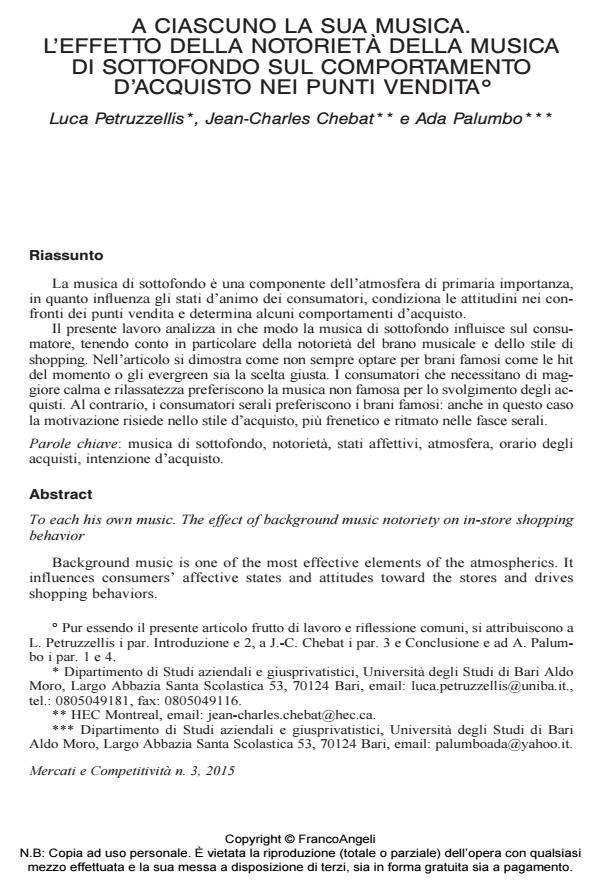To each his own music. The effect of background music notoriety on in-store shopping behavior
Journal title MERCATI E COMPETITIVITÀ
Author/s Luca Petruzzellis, Jean-Charles Chebat, Ada Palumbo
Publishing Year 2015 Issue 2015/3
Language Italian Pages 20 P. 15-34 File size 570 KB
DOI 10.3280/MC2015-003002
DOI is like a bar code for intellectual property: to have more infomation
click here
Below, you can see the article first page
If you want to buy this article in PDF format, you can do it, following the instructions to buy download credits

FrancoAngeli is member of Publishers International Linking Association, Inc (PILA), a not-for-profit association which run the CrossRef service enabling links to and from online scholarly content.
Background music is one of the most effective elements of the atmospherics. It influences consumers’ affective states and attitudes toward the stores and drives shopping behaviors. This study analyzes the background music effects manipulating its and considering the shopping style. The study shows that famous music, whether hit or evergreen, is not always effective. In fact, consumers with a relaxing and calming shopping style showed a preference for non-famous music. On the other hand, evening consumers prefer famous music due to their frenetic shopping style.
Keywords: Background music, notoriety, affective states, atmosphere, shopping hours, intention to buy
Luca Petruzzellis, Jean-Charles Chebat, Ada Palumbo, A ciascuno la sua musica. l’effetto della notorietà della musica di sottofondo sul comportamento d’acquisto nei punti vendita in "MERCATI E COMPETITIVITÀ" 3/2015, pp 15-34, DOI: 10.3280/MC2015-003002